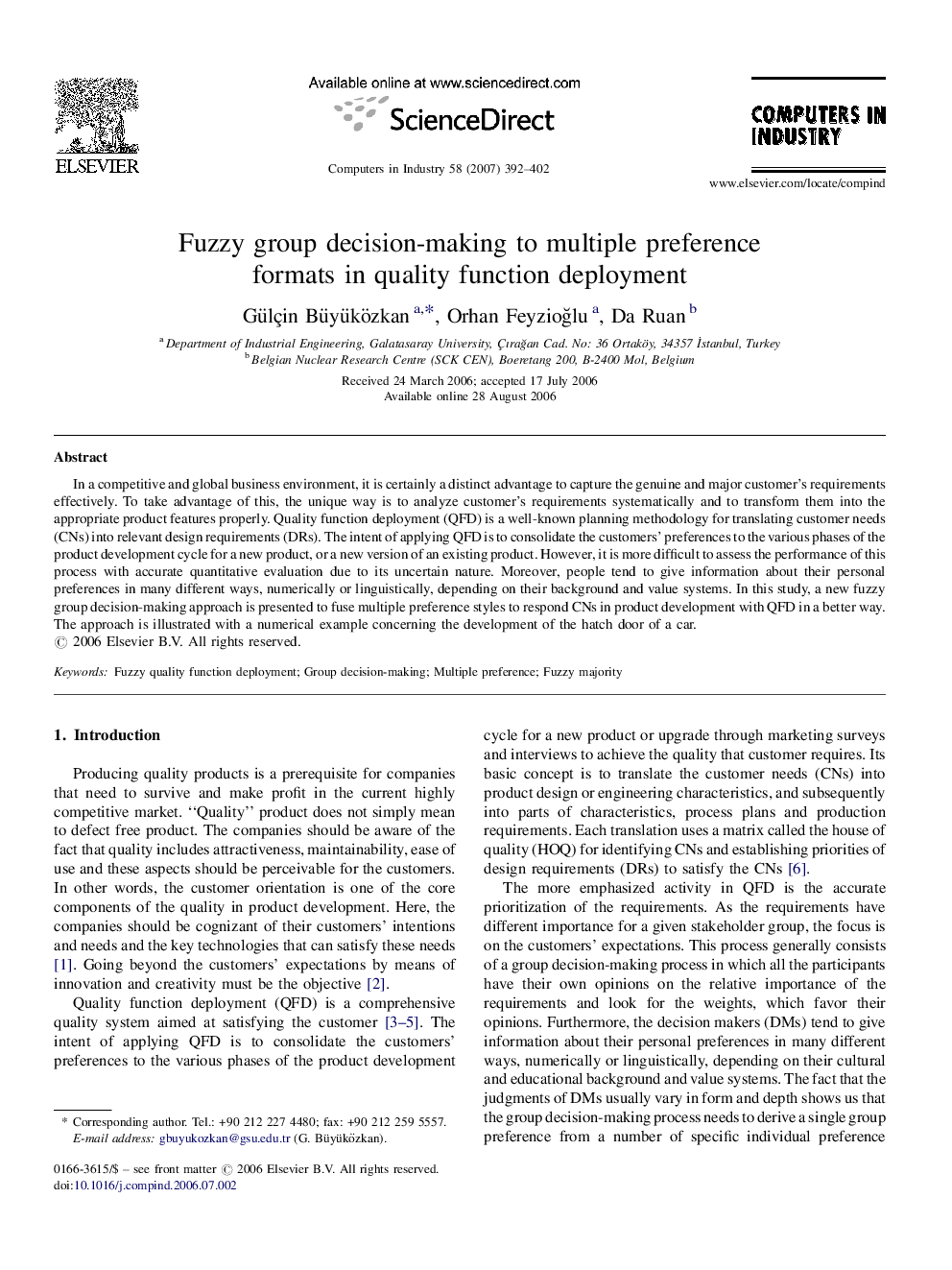| Article ID | Journal | Published Year | Pages | File Type |
|---|---|---|---|---|
| 509379 | Computers in Industry | 2007 | 11 Pages |
In a competitive and global business environment, it is certainly a distinct advantage to capture the genuine and major customer's requirements effectively. To take advantage of this, the unique way is to analyze customer's requirements systematically and to transform them into the appropriate product features properly. Quality function deployment (QFD) is a well-known planning methodology for translating customer needs (CNs) into relevant design requirements (DRs). The intent of applying QFD is to consolidate the customers’ preferences to the various phases of the product development cycle for a new product, or a new version of an existing product. However, it is more difficult to assess the performance of this process with accurate quantitative evaluation due to its uncertain nature. Moreover, people tend to give information about their personal preferences in many different ways, numerically or linguistically, depending on their background and value systems. In this study, a new fuzzy group decision-making approach is presented to fuse multiple preference styles to respond CNs in product development with QFD in a better way. The approach is illustrated with a numerical example concerning the development of the hatch door of a car.
